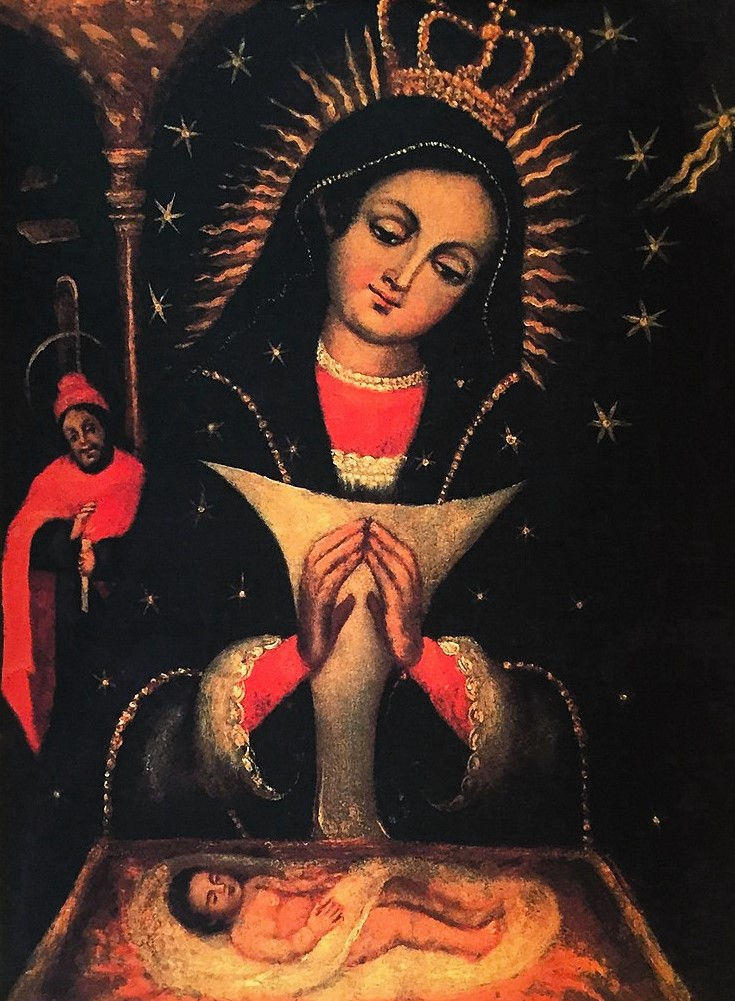Our Lady of Good Grace
- Sodality of Charity

- Nov 27, 2023
- 4 min read
Our Holy Lady of Good Grace
A Story from Dominican Republic
Translated by Frank Henius

One of the many ancient and picturesque small towns of the Dominican Republic is Villa de Salvaleón de Higuey. This town, with its many heraldic signs was founded at the beginning of the sixteenth century by the Spanish explorer, Juan de Esquivel. The most outstanding place of interest in the town is the ancient colonial church where the people go to worship the original image of Our Most Holy Lady of Good Grace, patron saint of the Dominican Republic. The annual festive day of this Holy Virgin is celebrated on the twenty-first day of January. On this day thousands of people from all parts of the country make a pilgrimage to the Sanctuary, either by automobile or on horseback. Many even walk, thereby doing penance, all in order to pay homage to the Virgin as she is represented by this miraculous image, and in this holy shrine.
The legend about the apparition of this Virgin tells us that some time during the sixteenth century, there lived in Duey, a region near Higuey, a rich Spanish gentleman who was very much esteemed and respected by the entire colony. In those days it was customary for the planters to make occasional trips to the capital of the colony, the city of Santo Domingo, to sell their cattle and farm products, and buy the things they needed in their households and on their plantations and cattle ranches.
On one of these occasions this fine Spanish gentleman, a planter and cattle-breeder, went on a journey to the capital, for just that purpose. Before his departure, he asked his daughters what he should bring them from the shops in the town.
The older of his two daughters asked him to bring her clothes and ribbons, and other things to adorn herself with, including a bracelet and some earrings. But the younger daughter, who was called Niña by her family and friends, was of a very religious and pious mind. She did not ask for clothes or finery, but begged her father to bring her an image of the Holy Virgin of the Good Grace. This seemed quite strange to her father, for he had never heard of a Virgin by that name, but of course, as he loved his little daughter dearly, he promised to find and bring her the desired image.
When he was returning home with his arms full of presents for his older daughter, he thought sadly about his inability to fulfill his younger daughter’s wish for an image of Our Holy Lady of Good Grace, for he had not found anyone who knew anything about her. Not even the Canons nor even the Archbishop himself had ever heard of any image of the Holy Virgin known by that name.
He stopped at a town called Los Dos Rios, where he was to spend a night at the house of a friend. During the evening the two men discussed the strange request of little Niña. Her father told his friend how sad he felt at being unable to comply with the girl’s wish.
It so happened that an old man with a flowing white beard, a pilgrim, was also spending the night at the house in Los Dos Rios. And when he heard his host and his friend speak of the image of the Holy Virgin that was impossible to find, he brought out of his saddle bag a beautiful image of the Virgin wearing a cloak of heavenly blue and adoring a new-born child. A star shone upon her over her left shoulder. Behind her, on the right and in the shadows, St. Joseph, holding a candle, was keeping guard over both the Virgin and the Infant. On each side of the Virgin there was a beautiful white lily.
The old man handed the image to the planter. He told him that it was what he and his friend were looking for – the image of Our Holy Lady of Good Grace.
Next day, the gentleman, before leaving his friend’s house, looked for the pilgrim to thank him for his precious present. But to his surprise and the surprise of the entire household the old man was gone, without bidding goodbye to anyone.
Little Niña had been waiting for the return of her father with great eagerness. Daily, while she waited, she would sit under a beautiful orange tree which was in full bloom. Together with her friends she prayed that her father would return safe and sound, and bring with him the image of the Virgin.
It was the twenty-first day of January when Niña’s father returned. He found her among her friends under the blossoming orange tree, praying and waiting for him. It gave him the greatest delight to present the beautiful image to his daughter and see how happy it made her.
The image of the Holy Lady of Good Grace was afterwards known as Niña’s Virgin, and soon after she received it a sanctuary was built for it under Niña’s own orange blossom tree which still stands.
The image, in a gold frame, was moved some years ago to Santo Domingo, the capital city, where it may be seen by great numbers of people every day.
Altagracia, which means Good Grace, is a popular name for Dominican Republic girls. And the national flag of that country bears the three colors of the Holy Lady of Good Grace, blue, white and red, in the shape of a cross.
















Comments